Why Customer Experience is driving Managed Service Providers’ Success

Imagine an organisation at which a storage array is about to fail. Before it does, machine learning sets in motion an automated workflow involving various redundancy measures, backup operations, alerts and re-shuffling of data. An AI-chatbot checks that the customer is happy, but the customer was blissfully unaware there was a problem.
That’s where managed services are headed – orchestrated service delivery and support, with automation taking care of routine technical decisions. More sophisticated customer service bots, predictive maintenance, and self-service to make services happen as if by magic.
That’s good news for customers and colleagues at time-poor MSPs. But it also has serious implications for MSP owners, says Gregg Lalle, Senior Vice President of International Sales and Strategy at ConnectWise, which connects technology teams with the platform and solutions that deliver technology as-a-service.

A framework that outlines the best practices being implemented to deliver a superior customer experience can be downloaded here.
“The technical maintenance is not only becoming automated, it’s now table stakes just to join the game,” Lalle says. “It’s incredibly easy to replicate and spin up servers. You simply won’t need people to look after the routine stuff in the future”.
The traditional bread and butter work of many MSPs is losing value, according to Lalle. He doesn’t see delivery and support being as big draw-cards in an era of AI and automation. For example, basic 24×7 monitoring and endpoint security is being commoditised. But many MSPs haven’t responded.
“At one of our recent user groups, where over 110 MSPs were present, I asked how many people in the audience had customers on month-to-month contracts and over 10 percent raised their hand. While that percentage may seem small, it was literally unheard of two years ago,” Lalle recalls.
Customers’ expectations on the increase
“It’s the SaaS mentality,” says Angus Mansfield, Sales and Marketing Director at Sydney MSP XCentral. “Everything has to happen now. Customers expect quick fixes and immediate resolutions. Their lives are also busier and they consume more than they used to.”

To be successful in these conditions, Lalle says MSPs need a new formula – one that focuses on customers’ experience when it comes to the engagement and outcome, rather than only on the technical aspects of delivery. That may seem obvious, but in Lalle’s experience, customer experience is often a misunderstood concept.
“Technicians will say, ‘Someone raised their hand, I asked for a ticket, helped them and they gave me a smiley face. We’re good.’ That’s wonderful, but it’s not customer experience,” he says.
Opportunities to do that start well before someone on a helpdesk picks up a phone. “Blog posts, e-mail responses, web sites, quotes, purchasing, delivery, etc.: each point is an opportunity to captivate, convert and delight customers,” Lalle says.
Some MSPs are starting to use this methodology and have already documented tangible results. But many haven’t and few have a blueprint which prioritises the experience throughout the customer journey and plans for continuous improvement.
That journey has six steps: awareness (when the customer is first exposed to marketing messages), evaluation, purchase, delivery, support and billing/renewals. MSPs need to move the customer smoothly and efficiently from each point to the next.
More MSPs are elevating their relationship with customers by offering ConnectWise software to streamline everything from its marketing to billing. Mansfield says this strategy has influenced how it engages with customers from start to finish.
When marketers have faster access to more accurate information about customers, they can also work more virtual CIO services, Lalle says. “This will take your relationship to a whole new level” he explains.

A framework that outlines the best practices being implemented to deliver a superior customer experience can be downloaded here.
The right tools
It’s important to measure the success of any efforts an MSP makes to improve its efforts. Customer service metrics should be tracked and foremost in all employees’ minds.
Another consideration is the cost of customer experience activities. MSPs should track marketing spending and how many leads and sales it generates. “Right now, MSPs are willingly turning money over without tracking whether it’s being used effectively MSPs need to start getting a handle on their customer acquisition cost,” Lalle says.
From break-fix to consulting
With these foundations in place, MSPs should free up staff to have a more consultative relationship with customers – which is what’s happened at XCentral.
“We had to change our lens a little bit,” Mansfield explains. “We used to think that our job finished with making sure everything was working for customers. Now, we work more strategically at adding value by working with our customers on how they can innovate and interact more effectively with their customers in turn.”
XCentral’s focus on customer service and strategic relationships and has paid off, with a consistent growth trajectory and winning several industry awards.
“Consistently the folks in our peer group, their number one priority has been customer service and customer success over profitability. They understand that this mentality drives behaviour and profitability, not the other way around,” Lalle says.
A framework that outlines the best practices being implemented to deliver a superior customer experience can be downloaded here.
READ MORE
- Ethical AI: The renewed importance of safeguarding data and customer privacy in Generative AI applications
- How Japan balances AI-driven opportunities with cybersecurity needs
- Deploying SASE: Benchmarking your approach
- Insurance everywhere all at once: the digital transformation of the APAC insurance industry
- Google parent Alphabet eyes HubSpot: A potential acquisition shaping the future of CRM
